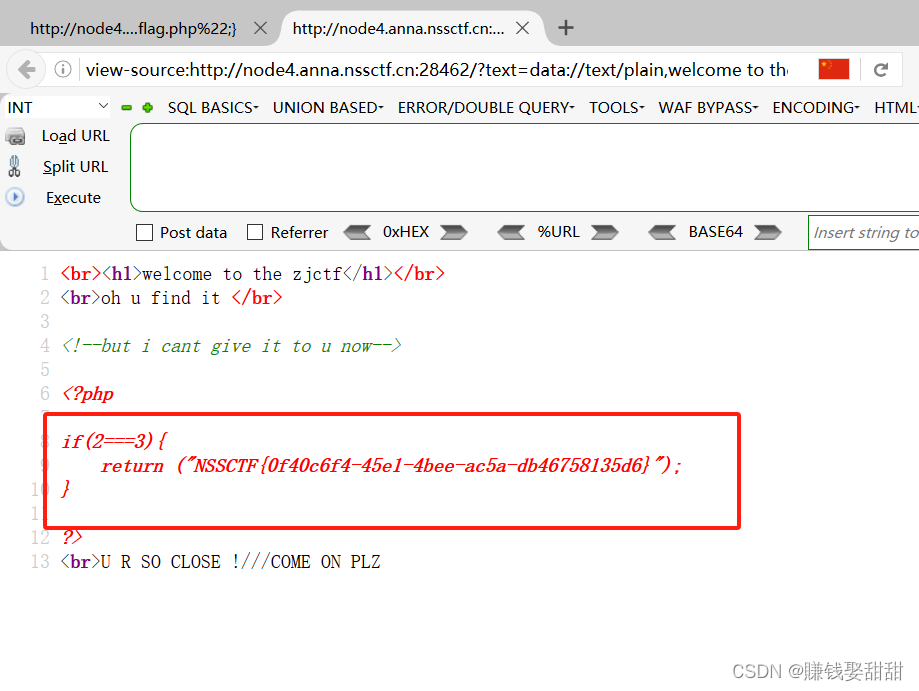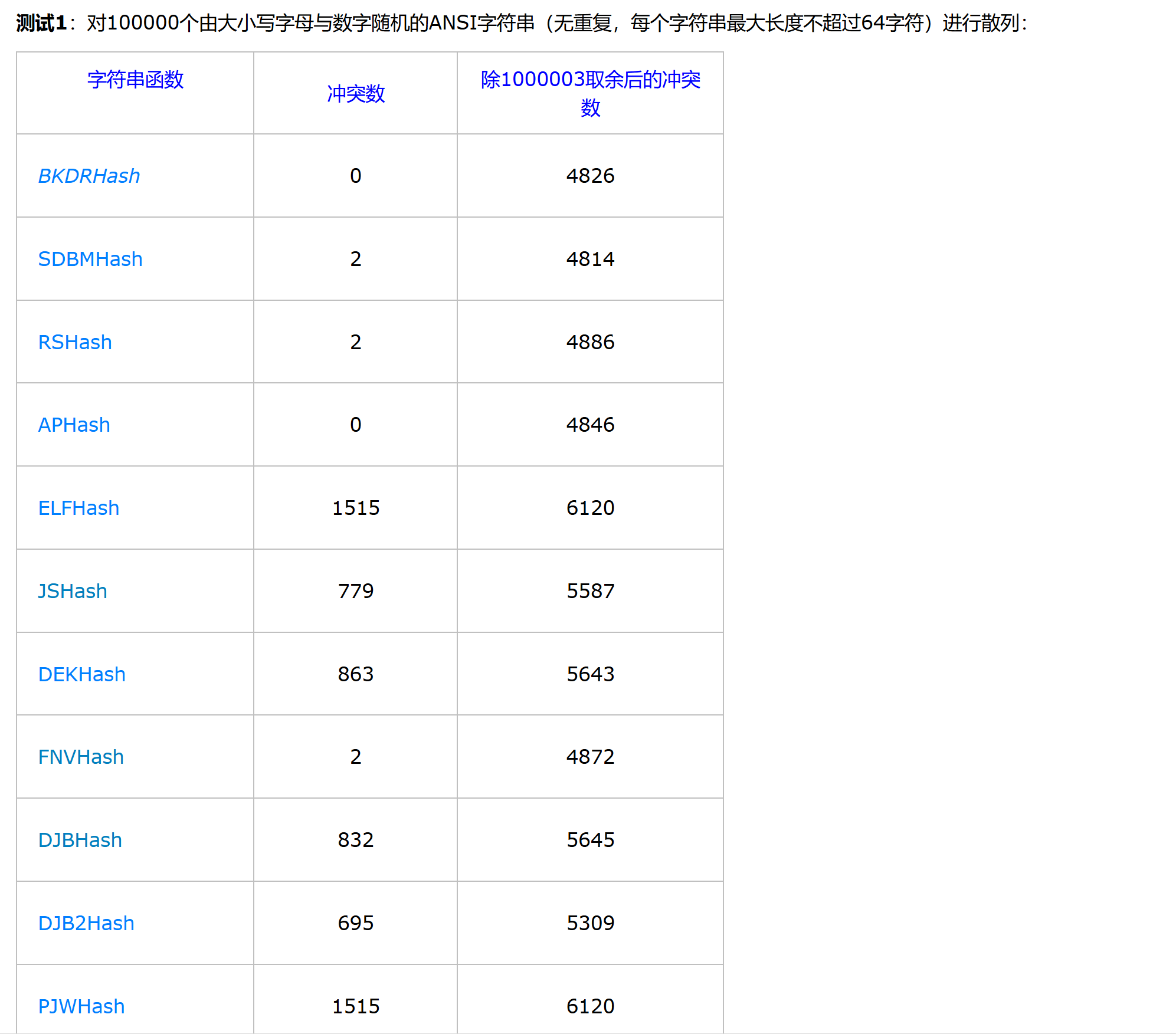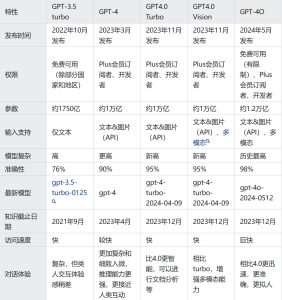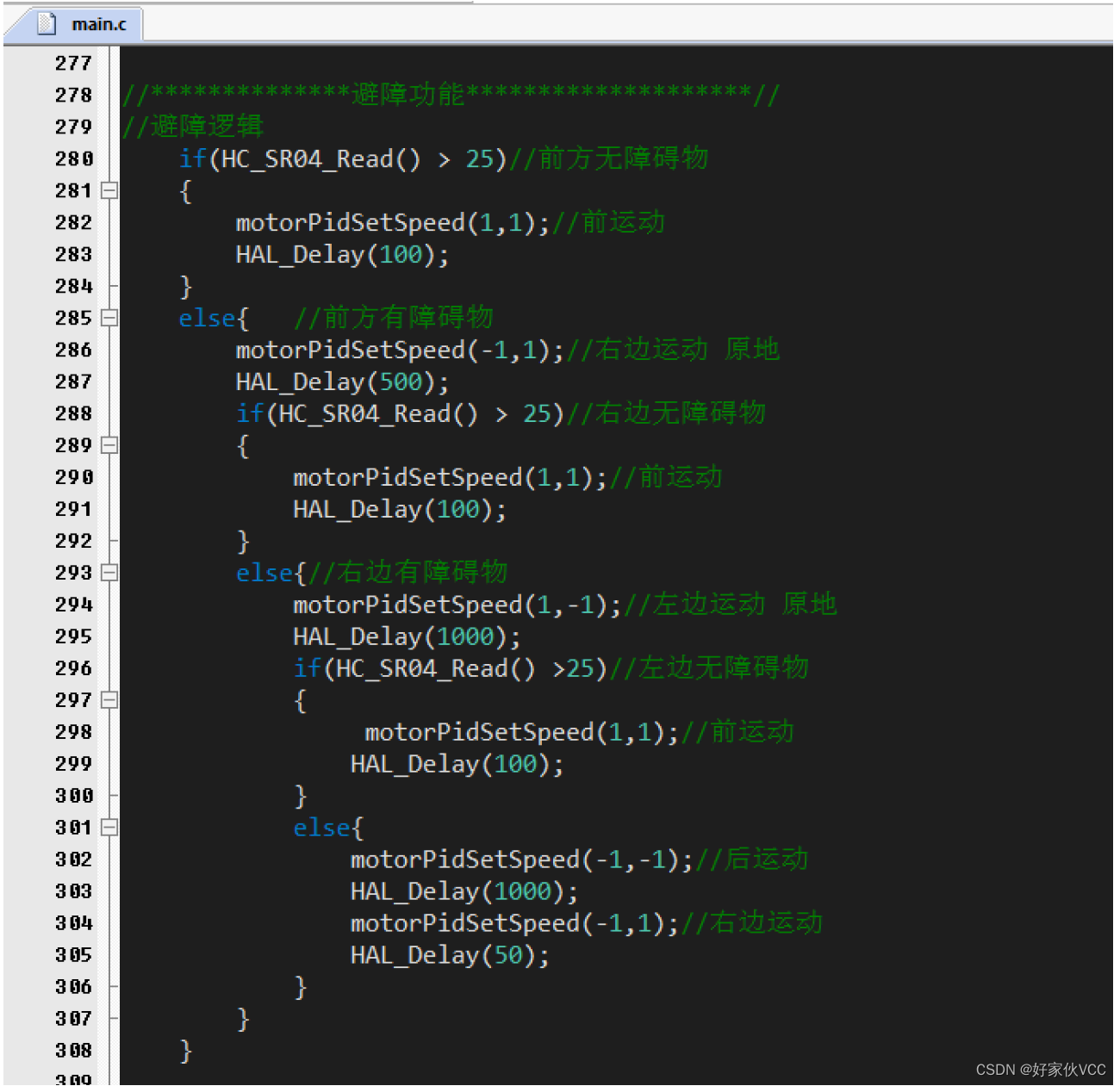香橙派 AIpro 昇腾 Ascend C++ 分类模型适配
flyfish
文章目录
- 香橙派 AIpro 昇腾 Ascend C++ 分类模型适配
- 前言
- 一、PyTorch官网resnet模型处理方式
- 1、PyTorch模型 导出 onnx格式
- 2、完整测试 输出top1结果
- 3、完整测试 输出top5结果
- 二、YOLOv8官网resnet模型Python处理方式
- 三、昇腾resnet原始的C++预处理方式
- 四、香橙派 AIpro 分类模型 自带Python示例的预处理方式
- 五、对比不同
- 1、Normalize
- 2、CenterCrop
- 六、香橙派 AIpro 分类模型resnet C++ 适配
- 方式1 代码如下
- 方式2 代码如下
- 七、可以这样处理的原因
模型可以从多个地方获取,这里说明两个地方
从PyTorch官网获取到的resnet模型
从YOLOv8官网获取到的resnet模型
前言
模型的处理
查看香橙派 AIpro SoC版本

根据上面查看到SoC版本是 310B4,在转换模型时选择Ascend310B4

在硬件上可以加装一块固态盘,装上之后开机自动识别
一、PyTorch官网resnet模型处理方式
1、PyTorch模型 导出 onnx格式
从PyTorch官网获取到的resnet模型
# -*- coding: utf-8 -*-
import torch
import torchvision
import onnx
import onnxruntime
import torch.nn as nn
# 创建 PyTorch ResNet50 模型实例
#在线下载
#model = torchvision.models.resnet50(pretrained=True)
#本地加载
checkpoint_path ="/home/model/resnet50-19c8e357.pth"
model = torchvision.models.resnet50().to("cpu")
checkpoint = torch.load(checkpoint_path,map_location=torch.device('cpu'))
model.load_state_dict(checkpoint)
model.eval()
batch_size = 1
input_shape = (batch_size, 3, 224, 224)
input_data = torch.randn(input_shape)
# 将模型转换为 ONNX 格式
output_path_static = "resnet_static.onnx"
output_path_dynamic = "resnet_dynamic.onnx"
# dynamic
torch.onnx.export(model, input_data, output_path_dynamic,
input_names=["input"], output_names=["output"],
dynamic_axes={"input": {0: "batch_size"}, "output": {0: "batch_size"}})
#static
torch.onnx.export(model, input_data, output_path_static,
input_names=["input"], output_names=["output"])
# 简单测试
session = onnxruntime.InferenceSession(output_path_dynamic)
new_batch_size = 2
new_input_shape = (new_batch_size, 3, 224, 224)
new_input_data = torch.randn(new_input_shape)
outputs = session.run(["output"], {"input": new_input_data.numpy()})
print(outputs)
2、完整测试 输出top1结果
# -*- coding: utf-8 -*-
import onnxruntime
import numpy as np
from torchvision import datasets, models, transforms
from PIL import Image
import torch.nn as nn
import torch
def postprocess(outputs):
res = list()
outputs_exp = np.exp(outputs)
outputs = outputs_exp / np.sum(outputs_exp, axis=1)[:,None]
predictions = np.argmax(outputs, axis = 1)
for pred, output in zip(predictions, outputs):
score = output[pred]
res.append((pred.tolist(),float(score)))
return res
onnx_model_path = "/home/model/resnet50_static.onnx"
ort_session = onnxruntime.InferenceSession(onnx_model_path)
transform = transforms.Compose([
transforms.Resize(256),
transforms.CenterCrop(224),
transforms.ToTensor(),
transforms.Normalize(mean=[0.485, 0.456, 0.406], std=[0.229, 0.224, 0.225]),
])
image = Image.open("/home/dog1_1024_683.jpg")
image = transform(image).unsqueeze(0) # 增加批处理维度
input_data = image.detach().numpy()
outputs_np = ort_session.run(None, {'input': input_data})
outputs = outputs_np[0]
res = postprocess(outputs)
print(res)
[(162, 0.9634788632392883)]
3、完整测试 输出top5结果
先把标签文件imagenet_classes.txt下载下来
curl -o imagenet_classes.txt https://raw.githubusercontent.com/pytorch/hub/master/imagenet_classes.txt
# -*- coding: utf-8 -*-
import onnxruntime
import numpy as np
from torchvision import datasets, models, transforms
from PIL import Image
import torch.nn as nn
import torch
from onnx import numpy_helper
import time
with open("imagenet_classes.txt", "r") as f:
categories = [s.strip() for s in f.readlines()]
def softmax(x):
e_x = np.exp(x - np.max(x))
return e_x / e_x.sum()
onnx_model_path = "/home/model/resnet50_static.onnx"
ort_session = onnxruntime.InferenceSession(onnx_model_path)
transform = transforms.Compose([
transforms.Resize(256),
transforms.CenterCrop(224),
transforms.ToTensor(),
transforms.Normalize(mean=[0.485, 0.456, 0.406], std=[0.229, 0.224, 0.225]),
])
image = Image.open("/home/dog1_1024_683.jpg")
image = transform(image).unsqueeze(0) # 增加批处理维度
session = onnxruntime.InferenceSession(onnx_model_path, providers=['CPUExecutionProvider'])
latency = []
start = time.time()
input_arr = image.detach().numpy()
output = session.run([], {'input':input_arr})[0]
latency.append(time.time() - start)
output = output.flatten()
output = softmax(output)
top5_catid = np.argsort(-output)[:5]
for catid in top5_catid:
print(catid, categories[catid], output[catid])
print("ONNX Runtime CPU Inference time = {} ms".format(format(sum(latency) * 1000 / len(latency), '.2f')))
162 beagle 0.963479
167 English foxhound 0.020814817
166 Walker hound 0.011742038
161 basset 0.0024754668
164 bluetick 0.0004774033
ONNX Runtime CPU Inference time = 20.01 ms
预处理方式
在计算机视觉领域,很多预训练模型(例如ResNet、VGG等)都是基于ImageNet数据集训练的。因此,使用相同的均值和标准差对数据进行标准化处理,可以确保输入数据与预训练模型的输入分布一致,有助于充分利用预训练模型的优势。
transforms.Normalize函数通过减去均值并除以标准差,将输入图像的每个通道进行标准化处理。
ImageNet数据集的结构
训练集:包含超过120万张图像,用于训练模型。
验证集:包含50,000张图像,用于模型验证和调整超参数。
测试集:包含100,000张图像,用于评估模型的最终性能。
使用ImageNet数据集的注意事项
预处理:在使用ImageNet数据集进行训练时,通常需要对图像进行标准化处理,常用的均值和标准差为:
均值:0.485,0.456,0.406
标准差:0.229,0.224,0.225
数据增强:为了提升模型的泛化能力,通常会对训练图像进行数据增强处理,例如随机裁剪、水平翻转等
transforms.Resize 处理方式不同,有的地方是256,有的地方用的是224,
二、YOLOv8官网resnet模型Python处理方式
从YOLOv8官网获取到的resnet模型
YOLOv8由Ultralytics 提供,YOLOv8 支持全方位的视觉 AI 任务,包括检测、分割、姿态估计、跟踪和分类。
yolov8-cls-resnet50配置
# Parameters
nc: 1000 # number of classes
scales: # model compound scaling constants, i.e. 'model=yolov8n-cls.yaml' will call yolov8-cls.yaml with scale 'n'
# [depth, width, max_channels]
n: [0.33, 0.25, 1024]
s: [0.33, 0.50, 1024]
m: [0.67, 0.75, 1024]
l: [1.00, 1.00, 1024]
x: [1.00, 1.25, 1024]
# YOLOv8.0n backbone
backbone:
# [from, repeats, module, args]
- [-1, 1, ResNetLayer, [3, 64, 1, True, 1]] # 0-P1/2
- [-1, 1, ResNetLayer, [64, 64, 1, False, 3]] # 1-P2/4
- [-1, 1, ResNetLayer, [256, 128, 2, False, 4]] # 2-P3/8
- [-1, 1, ResNetLayer, [512, 256, 2, False, 6]] # 3-P4/16
- [-1, 1, ResNetLayer, [1024, 512, 2, False, 3]] # 4-P5/32
# YOLOv8.0n head
head:
- [-1, 1, Classify, [nc]] # Classify
该分类模型的预处理方式如下
IMAGENET_MEAN = 0.485, 0.456, 0.406 # RGB mean
IMAGENET_STD = 0.229, 0.224, 0.225 # RGB standard deviation
def classify_transforms(
size=224,
mean=DEFAULT_MEAN,
std=DEFAULT_STD,
interpolation=Image.BILINEAR,
crop_fraction: float = DEFAULT_CROP_FRACTION,
):
"""
Classification transforms for evaluation/inference. Inspired by timm/data/transforms_factory.py.
Args:
size (int): image size
mean (tuple): mean values of RGB channels
std (tuple): std values of RGB channels
interpolation (T.InterpolationMode): interpolation mode. default is T.InterpolationMode.BILINEAR.
crop_fraction (float): fraction of image to crop. default is 1.0.
Returns:
(T.Compose): torchvision transforms
"""
import torchvision.transforms as T # scope for faster 'import ultralytics'
if isinstance(size, (tuple, list)):
assert len(size) == 2
scale_size = tuple(math.floor(x / crop_fraction) for x in size)
else:
scale_size = math.floor(size / crop_fraction)
scale_size = (scale_size, scale_size)
# Aspect ratio is preserved, crops center within image, no borders are added, image is lost
if scale_size[0] == scale_size[1]:
# Simple case, use torchvision built-in Resize with the shortest edge mode (scalar size arg)
tfl = [T.Resize(scale_size[0], interpolation=interpolation)]
else:
# Resize the shortest edge to matching target dim for non-square target
tfl = [T.Resize(scale_size)]
tfl += [T.CenterCrop(size)]
tfl += [
T.ToTensor(),
T.Normalize(
mean=torch.tensor(mean),
std=torch.tensor(std),
),
]
return T.Compose(tfl)
标准化数据分布:深度学习模型通常在训练过程中受益于输入数据的标准化,即将输入数据的分布调整为零均值和单位方差。这样可以确保所有特征具有相似的尺度,从而提高学习效率。对于图像数据而言,这意味着将像素值从原始范围(通常是0-255)转换到一个更统一的范围。
加速收敛:通过减去平均值并除以标准差,可以使梯度下降等优化算法在训练初期更快地收敛。这是因为这样的预处理减少了输入数据的方差,使得学习过程更加稳定和高效。
网络权重初始化的匹配:很多预训练模型(尤其是基于ImageNet训练的模型)在设计和训练时就假设了输入数据经过了这样的标准化处理。因此,在微调这些模型或使用它们作为特征提取器时,继续使用相同的预处理步骤能保证数据分布与模型预期的一致性,有助于保持模型性能。
泛化能力:ImageNet是一个大规模、多样化的图像数据集,其统计特性(如颜色分布)在很大程度上代表了自然图像的普遍特征。因此,使用ImageNet的统计量进行归一化有助于模型学习到更广泛适用的特征,增强模型在新数据上的泛化能力。
如果任务或数据集与ImageNet有显著不同,直接使用ImageNet的均值和标准差可能不是最佳选择。在这种情况下,根据自己数据集的统计特性来计算并使用均值和标准差进行归一化可能会得到更好的效果。
原始代码
三、昇腾resnet原始的C++预处理方式
namespace {
const float min_chn_0 = 123.675;
const float min_chn_1 = 116.28;
const float min_chn_2 = 103.53;
const float var_reci_chn_0 = 0.0171247538316637;
const float var_reci_chn_1 = 0.0175070028011204;
const float var_reci_chn_2 = 0.0174291938997821;
}
Result SampleResnetQuickStart::ProcessInput(const string testImgPath)
{
// read image from file by cv
imagePath = testImgPath;
srcImage = imread(testImgPath);
Mat resizedImage;
// zoom image to modelWidth_ * modelHeight_
resize(srcImage, resizedImage, Size(modelWidth_, modelHeight_));
// get properties of image
int32_t channel = resizedImage.channels();
int32_t resizeHeight = resizedImage.rows;
int32_t resizeWeight = resizedImage.cols;
// data standardization
float meanRgb[3] = {min_chn_2, min_chn_1, min_chn_0};
float stdRgb[3] = {var_reci_chn_2, var_reci_chn_1, var_reci_chn_0};
// create malloc of image, which is shape with NCHW
imageBytes = (float*)malloc(channel * resizeHeight * resizeWeight * sizeof(float));
memset(imageBytes, 0, channel * resizeHeight * resizeWeight * sizeof(float));
uint8_t bgrToRgb=2;
// image to bytes with shape HWC to CHW, and switch channel BGR to RGB
for (int c = 0; c < channel; ++c)
{
for (int h = 0; h < resizeHeight; ++h)
{
for (int w = 0; w < resizeWeight; ++w)
{
int dstIdx = (bgrToRgb - c) * resizeHeight * resizeWeight + h * resizeWeight + w;
imageBytes[dstIdx] = static_cast<float>((resizedImage.at<cv::Vec3b>(h, w)[c] -
1.0f*meanRgb[c]) * 1.0f*stdRgb[c] );
}
}
}
return SUCCESS;
}
四、香橙派 AIpro 分类模型 自带Python示例的预处理方式
img_origin = Image.open(pic_path).convert('RGB')
from torchvision import transforms
normalize = transforms.Normalize(mean=[0.485, 0.456, 0.406], std=[0.229, 0.224, 0.225])
trans_list = transforms.Compose([transforms.Resize(256),
transforms.CenterCrop(224),
transforms.ToTensor(),
normalize])
img = trans_list(img_origin)
运行
(base) HwHiAiUser@orangepiaipro:~/samples/model-adapter-models/cls/edge_infer$ ./run.sh
set env successfully!!
start exec atc
[Sample] init resource stage:
Init resource success
load model mobilenetv3_100_bs1.om
Init model resource
[Model] create model output dataset:
[Model] create model output dataset success
[Model] class Model init resource stage success
acl.mdl.execute exhaust 0:00:00.004750
class result : cat
pic name: cat
pre cost:7050.8ms
forward cost:6.8ms
post cost:0.0ms
total cost:7057.6ms
FPS:0.1
image name :./data/cat/cat.23.jpg, infer result: cat
acl.mdl.execute exhaust 0:00:00.004660
class result : cat
pic name: cat
pre cost:14.0ms
forward cost:5.2ms
post cost:0.0ms
total cost:19.2ms
FPS:52.2
image name :./data/cat/cat.76.jpg, infer result: cat
五、对比不同
经过比对有以下不同处
1、Normalize
Normalize 数值的不同,YOLOv8和PyTorch 是IMAGENET_MEAN 和 IMAGENET_STD
transforms.Normalize(mean=[0.485, 0.456, 0.406], std=[0.229, 0.224, 0.225])
昇腾的是
namespace {
const float min_chn_0 = 123.675;
const float min_chn_1 = 116.28;
const float min_chn_2 = 103.53;
const float var_reci_chn_0 = 0.0171247538316637;
const float var_reci_chn_1 = 0.0175070028011204;
const float var_reci_chn_2 = 0.0174291938997821;
}
2、CenterCrop
YOLOv8和PyTorch都有 CenterCrop 中心剪裁处理
六、香橙派 AIpro 分类模型resnet C++ 适配
根据对比的结果所以我们只要处理IMAGENET_MEAN 和 IMAGENET_STD ,在加上CenterCrop 中心剪裁处理
所以我们可以增加centercrop_and_resize函数,然后在ProcessInput调用即可。
方式1 代码如下
static const float IMAGENET_MEAN[3] = { 0.485, 0.456, 0.406 };
static const float IMAGENET_STD[3] = { 0.229, 0.224, 0.225 };
void centercrop_and_resize(const cv::Mat& src_img, cv::Mat& dst_img,int target_size)
{
int height = src_img.rows;
int width = src_img.cols;
if(height >= width)// hw
{
cv::resize(src_img, dst_img, cv::Size(target_size,target_size * height / width), 0, 0, cv::INTER_AREA);
}
else
{
cv::resize(src_img, dst_img, cv::Size(target_size * width / height,target_size), 0, 0, cv::INTER_AREA);
}
height = dst_img.rows;
width = dst_img.cols;
cv::Point center(width/2, height/2);
cv::Size size(target_size, target_size);
cv::getRectSubPix(dst_img, size, center, dst_img);
}
Result SampleResnetQuickStart::ProcessInput(const string testImgPath)
{
// read image from file by cv
imagePath = testImgPath;
srcImage = imread(testImgPath);
cv::cvtColor(srcImage, srcImage, cv::COLOR_BGR2RGB);
Mat resizedImage;
centercrop_and_resize(srcImage,resizedImage,224);
// get properties of image
int32_t channel = resizedImage.channels();
int32_t resizeHeight = resizedImage.rows;
int32_t resizeWeight = resizedImage.cols;
std::vector<cv::Mat> rgbChannels(3);
cv::split(resizedImage, rgbChannels);
for (size_t i = 0; i < rgbChannels.size(); i++) // resizedImage = resizedImage / 255.0;
{
rgbChannels[i].convertTo(rgbChannels[i], CV_32FC1, 1.0 / ( 255.0* IMAGENET_STD[i]), (0.0 - IMAGENET_MEAN[i]) / IMAGENET_STD[i]);
}
int len = channel * resizeHeight * resizeWeight * sizeof(float);
imageBytes = (float *)malloc(len);
memset(imageBytes, 0, len);
int index = 0;
for (int c = 0; c <3; c++)
{ // R,G,B
for (int h = 0; h < modelHeight_; ++h)
{
for (int w = 0; w < modelWidth_; ++w)
{
imageBytes[index] = rgbChannels[c].at<float>(h, w); // R->G->B
index++;
}
}
}
return SUCCESS;
}
方式2 代码如下
CenterCrop类似如下的写法
char* centercrop_and_resize(cv::Mat& iImg, std::vector<int> iImgSize, cv::Mat& oImg)
{
if (iImg.channels() == 3)
{
oImg = iImg.clone();
cv::cvtColor(oImg, oImg, cv::COLOR_BGR2RGB);
}
else
{
cv::cvtColor(iImg, oImg, cv::COLOR_GRAY2RGB);
}
int h = iImg.rows;
int w = iImg.cols;
int m = min(h, w);
int top = (h - m) / 2;
int left = (w - m) / 2;
cv::resize(oImg(cv::Rect(left, top, m, m)), oImg, cv::Size(iImgSize.at(0), iImgSize.at(1)));
return RET_OK;
}
使用方式
cv::Mat img = cv::imread(img_path);
std::vector<int> imgSize = { 640, 640 };
cv::Mat processedImg;
centercrop_and_resize(iImg, imgSize, processedImg);
processedImg就是我们要得到的cv::Mat 。图像经过centercrop,最后大小是640, 640,通道顺序是RGB
七、可以这样处理的原因
不同的Normalize数值之间的转换关系
# namespace {
# const float min_chn_0 = 123.675;
# const float min_chn_1 = 116.28;
# const float min_chn_2 = 103.53;
# const float var_reci_chn_0 = 0.0171247538316637;
# const float var_reci_chn_1 = 0.0175070028011204;
# const float var_reci_chn_2 = 0.0174291938997821;
# }
import numpy as np
mean = np.array([0.485, 0.456, 0.406])
std = np.array([0.229, 0.224, 0.225])
print(mean * 255)# [123.675 116.28 103.53 ]
print(1/(std*255))#[0.01712475 0.017507 0.01742919]
两者是可以相互转换的
# 0.485 × 255 = 123.675
# 0.456 × 255 = 116.28
# 0.406 × 255 = 103.53
# 0.229 × 255 = 58.395
# 0.224 × 255 = 57.12
# 0.225 × 255 = 57.375
# 1 ÷ 58.395 = 0.017124754
# 1 ÷ 57.12 = 0.017507003
# 1 ÷ 57.375 = 0.017429194
原始整个流程如下

适配后的处理就在上面第3步ProcessInput加上了 CenterCrop
链接地址
https://www.hiascend.com/zh/
https://gitee.com/ascend
华为原版的resnet图片分类,有C++版本和Python版本
https://gitee.com/ascend/samples/tree/master/inference/modelInference/sampleResnetQuickStart/



















